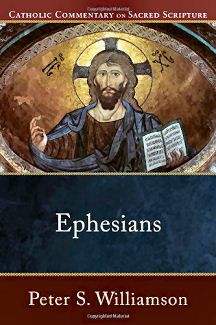
|
Posted June 9, 2010
Book: Ephesians Author: Peter S. Williamson Baker Academic. Grand Rapids, MI. 2009. Pp. 217 An Excerpt from the Introduction:
An Excerpt from the Book: Building up the Church Ephesians 4:1-16 Sometimes our need for growth, as individuals and as communities, is painfully obvious. How often do we hear fellow Catholics, or ourselves, express dissatisfaction with parish life, with our Church’s witness in the world, or with some other aspect of the Church’s life? And when we turn our gaze on our own discipleship, we notice many shortcomings. Ephesians 4:1-16 explains how spiritual growth comes to the Church, to our local communities, and to ourselves. Paul teaches us that as each member strives for unity and fulfills his or her role of ministry, the body of Christ advances toward maturity. Paul begins his teaching about Christian conduct by talking about life in the Church rather than individual behaviors because he understands that individual Christians are transformed through community life in the body of Christ. The first part (4:1-6) of this teaching on growth addresses the subject of unity. The second part (4:7-12) discusses ministry in the Church. The third part (4:13-16) describes the outcome of effective ministry, namely, Christian maturity. Table of Contents: Part I Proclamation of God’s Gracious Plan of Salvation in Christ Blessing God for every spiritual blessing A prayer to know God and to understand his gifts Saved by grace through faith for Good works Gentiles and Jews reconciled to God and united in the Messiah Commissioned to proclaim God’s secret plan A prayer for divinization Part 2 Exhortation to Christian Conduct Building up the Church The new self and a new way of living Children of life Wives and husbands, Christ and the Church Children and parents, slaves and masters A summons to spiritual battle |
|
